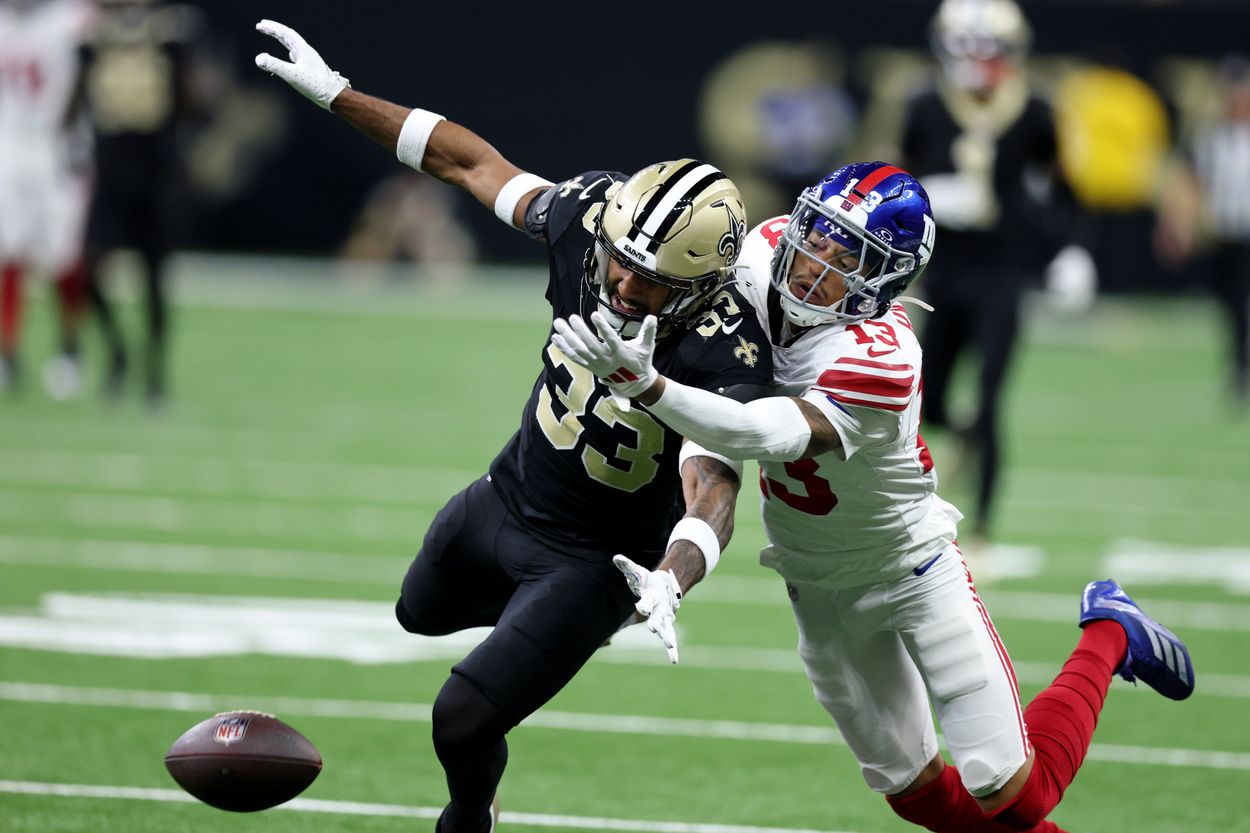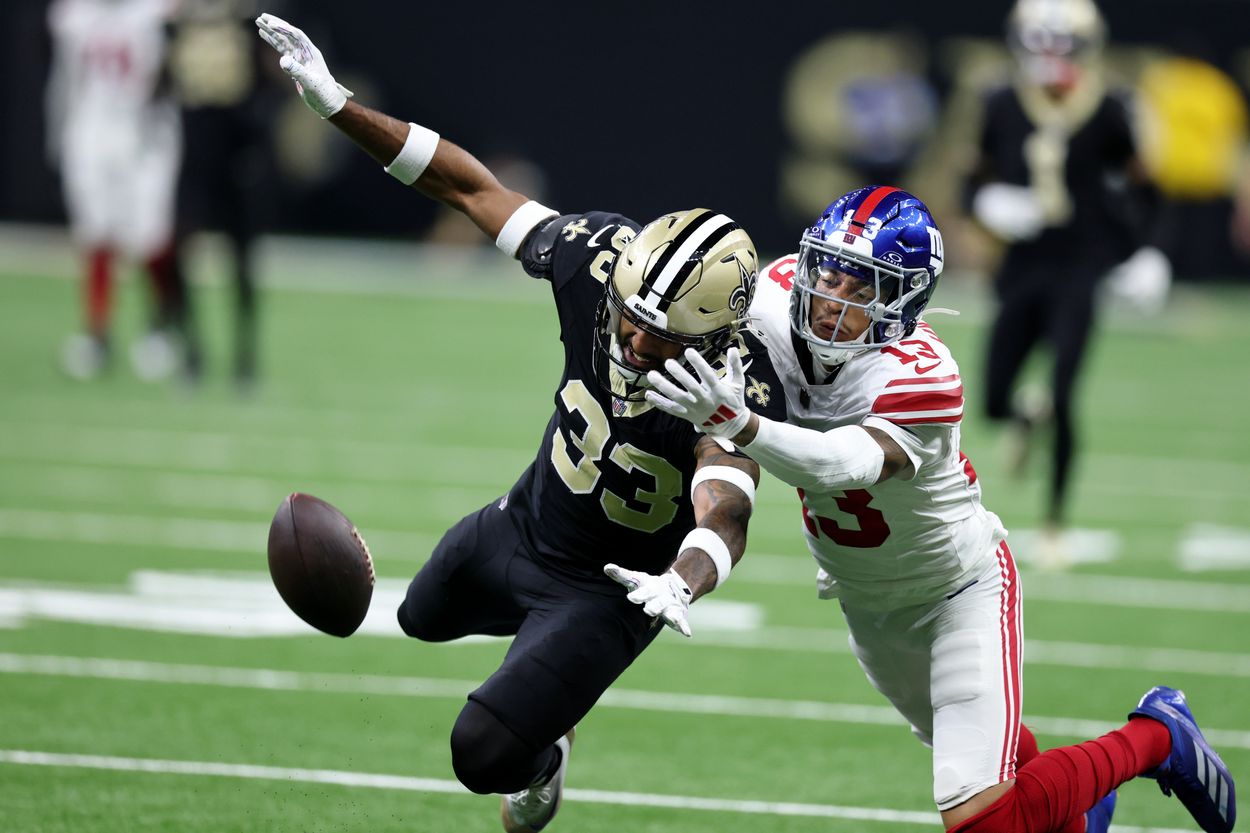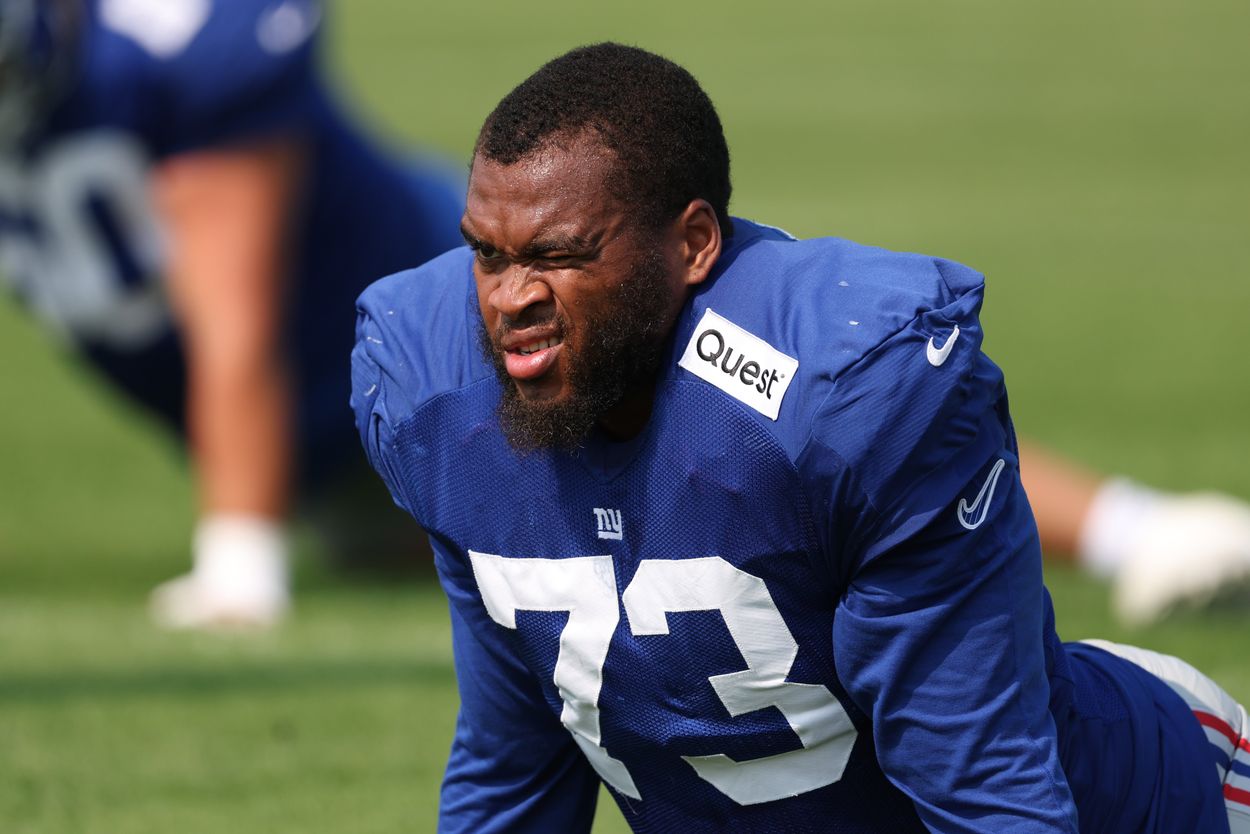
The New York Giants didn’t just lose to the New Orleans Saints on Sunday — they unraveled. A 26–14 defeat at the Superdome wasn’t just another tally in the loss column; it was a flashing red warning sign for a team that started strong but folded at the first sign of adversity.
After scoring touchdowns on their opening two drives, the Giants went ice-cold, failing to register another point the rest of the way. What followed was a five-possession stretch that ended in turnovers, blown assignments, and dropped passes — the kind of self-inflicted collapse that defines a team teetering on the edge of irrelevance.

Offensive meltdown exposes receiving woes
At the heart of the problem was a receiving corps that looked utterly outmatched. Darius Slayton, the veteran supposed to provide consistency, delivered the opposite — dropping multiple passes and fumbling at a critical moment. But perhaps no player embodied the Giants’ frustration more than Jalin Hyatt.
Hyatt, now in his third season, was targeted three times and came away empty-handed. Two of those passes slipped directly through his fingers, summing up what has been a disastrous regression for the once-promising wideout. The former third-round pick flashed potential as a rookie with his vertical speed, offering glimpses of a future deep threat. But since then, he’s been a shell of that player — inconsistent, unreliable, and ultimately, unplayable.
Hyatt’s game has become one-dimensional. He can still sprint past defenders, but without dependable hands or nuanced route-running, his speed is wasted. A receiver who can’t finish plays is like a sports car with no brakes — flashy until it costs you control. At this stage, it’s fair to wonder if the Giants should move on entirely and give his reps to a practice-squad player who might still have something to prove.
A brutal reminder of failed investments
Hyatt isn’t alone on the list of disappointments. Former seventh-overall pick Evan Neal continues to symbolize one of the front office’s biggest missteps. Once envisioned as a cornerstone offensive lineman, Neal has become an afterthought — healthy, inactive, and now benched for five straight games.
The Giants’ refusal to activate him despite a supposedly “strong” summer camp says everything. They rejected his fifth-year option months ago, and it’s clear they no longer view him as part of the long-term plan. Instead, Neal is simply occupying a roster spot, serving as a reminder of how quickly a high draft pick can turn into dead weight.
At this point, the team’s patience seems less about football and more about optics. General manager Joe Schoen might be trying to preserve some semblance of credibility on paper, but every week Neal sits out, that illusion fades further.

A front office facing uncomfortable questions
When a team spirals like this, the blame can’t fall solely on players. The Giants’ inability to develop their recent draft picks — Hyatt, Neal, and others — reflects deeper issues within the organization’s scouting and coaching infrastructure. It’s not just about talent evaluation; it’s about turning that talent into production.
The Giants’ roster looks like a patchwork of missed opportunities. While a few stars like Abdul Carter and Malik Nabers have hit, too many others have fallen flat. And when your supposed building blocks become liabilities, the entire foundation begins to crack.
Searching for a pulse
The Saints game felt like more than a loss — it felt like a breaking point. The Giants had a golden opportunity to build momentum after taking down the Chargers last week. Instead, they reverted to bad habits, poor execution, and visible frustration.
With players like Hyatt dropping routine passes and Neal wasting away on the bench, the Giants are staring at a painful truth: development is their biggest enemy. Until they fix that, all the early touchdowns and fleeting flashes of hope will mean nothing.
For now, this team is what it’s shown — talented in moments, lost in others, and trapped somewhere in between. And unless something changes fast, Sunday’s meltdown in New Orleans won’t be the low point — it’ll just be the latest one.
